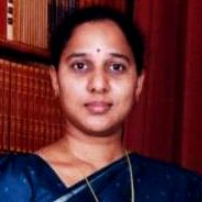International Journal of Intelligent Systems and Applications (IJISA)
IJISA Vol. 10, No. 5, 8 May 2018
Cover page and Table of Contents: PDF (size: 551KB)
A Novel Evolutionary Automatic Data Clustering Algorithm using Teaching-Learning-Based Optimization
PDF (551KB), PP.61-70
Views: 0 Downloads: 0
Author(s)
Index Terms
Teaching-Learning-Based Optimization, Automatic Data Clustering, Cluster Validity Indices, Meta-heuristics, Machine Learning, Evolutionary Algorithms, Multi-objective problems
Abstract
Teaching-Learning-Based Optimization (TLBO) is a contemporary algorithm being used as a novel, trustworthy, precise and robust optimization technique for global optimization over continuous spaces both constrained and unconstrained tribulations. TLBO works on the beliefs of teaching and learning and clearly justifies this pedagogy by highlighting the effect of power of a teacher on the output of learners in a class. This paper, explores the applicability of k-means unsupervised learning into TLBO with two endeavors, i.e. to automatically find the optimal number of naturally classified partition in the data without any prior information, and the other is to inspect the naturally classified partitions with cluster validity indices (CVIs) and endorse the goodness of clusters. The proposed automatic clustering algorithm using TLBO (AutoTLBO) pursues a novel evolutionary approach by incorporating the simple k-means algorithm and CVIs into TLBO to configure and validate automatic natural partition in datasets. This algorithm retains the core ideology of clustering to minimize the inter cluster distances and maximize the intra cluster distances among the data. Experimental analysis substantiates the openness of the anticipated method after inspecting suavest panoramic rendering over artificial and benchmark datasets.
Cite This Paper
Ramachandra Rao. Kurada, Karteeka Pavan. Kanadam, "A Novel Evolutionary Automatic Data Clustering Algorithm using Teaching-Learning-Based Optimization", International Journal of Intelligent Systems and Applications(IJISA), Vol.10, No.5, pp.61-70, 2018. DOI:10.5815/ijisa.2018.05.07
Reference
[1]Back, Thomas. Evolutionary algorithms in theory and practice: evolution strategies, evolutionary programming, genetic algorithms. Oxford university press, 1996.
[2]Deb, Kalyanmoy, and Kaisa Miettinen. Multiobjective optimization: interactive and evolutionary approaches. Vol. 5252. Springer Science & Business Media, 2008.
[3]Rao, R. Venkata, V. J. Savsani, and J. Balic. "Teaching–learning-based optimization algorithm for unconstrained and constrained real-parameter optimization problems." Engineering Optimization 44.12 (2012): 1447-1462.
[4]Rao, Ravipudi V., Vimal J. Savsani, and D. P. Vakharia. "Teaching–learning-based optimization: a novel method for constrained mechanical design optimization problems." Computer-Aided Design 43.3 (2011): 303-315.
[5]Rao, R. Venkata, Vimal J. Savsani, and D. P. Vakharia. "Teaching–learning-based optimization: an optimization method for continuous non-linear large scale problems." Information sciences 183.1 (2012): 1-15.
[6]Rao, R., and Vivek Patel. "An elitist teaching-learning-based optimization algorithm for solving complex constrained optimization problems." International Journal of Industrial Engineering Computations 3.4 (2012): 535-560.
[7]Rao, R., and Vivek Patel. "Comparative performance of an elitist teaching-learning-based optimization algorithm for solving unconstrained optimization problems." International Journal of Industrial Engineering Computations 4.1 (2013): 29-50.
[8]Rao, R. Venkata, and G. G. Waghmare. "A comparative study of a teaching–learning-based optimization algorithm on multi-objective unconstrained and constrained functions." Journal of King Saud University-Computer and Information Sciences 26.3 (2014): 332-346.
[9]Rao, R. Venkata, and Vivek Patel. "An improved teaching-learning-based optimization algorithm for solving unconstrained optimization problems." Scientia Iranica 20.3 (2013): 710-720.
[10]Rand, William M. "Objective criteria for the evaluation of clustering methods." Journal of the American Statistical association 66.336 (1971): 846-850.
[11]Hubert, Lawrence, and James Schultz. "Quadratic assignment as a general data analysis strategy." British journal of mathematical and statistical psychology 29.2 (1976): 190-241.
[12]Rousseeuw, Peter J. "Silhouettes: a graphical aid to the interpretation and validation of cluster analysis." Journal of computational and applied mathematics 20 (1987): 53-65.
[13]Davies, David L., and Donald W. Bouldin. "A cluster separation measure." IEEE transactions on pattern analysis and machine intelligence 2 (1979): 224-227.
[14]Chou, C-H., M-C. Su, and Eugene Lai. "A new cluster validity measure and its application to image compression." Pattern Analysis and Applications 7.2 (2004): 205-220.
[15]Jain, Anil K. "Data clustering: 50 years beyond K-means." Pattern recognition letters 31.8 (2010): 651-666.
[16]Blake, Catherine, and Christopher J. Merz. "{UCI} Repository of machine learning databases." (1998).
[17]Das, Swagatam, Ajith Abraham, and Amit Konar. "Automatic clustering using an improved differential evolution algorithm." IEEE Transactions on systems, man, and cybernetics-Part A: Systems and Humans 38.1 (2008): 218-237.
[18]Liu, Yongguo, Xindong Wu, and Yidong Shen. "Automatic clustering using genetic algorithms." Applied mathematics and computation 218.4 (2011): 1267-1279.
[19]Kurada, Ramachandra Rao, K. Karteeka Pavan, and Allam Appa Rao. "Automatic teaching–learning-based optimization: A novel clustering method for gene functional enrichments." Computational Intelligence Techniques for Comparative Genomics. Springer Singapore, 2015. 17-35.
[20]Fogel, David B. Evolutionary computation: toward a new philosophy of machine intelligence. Vol. 1. John Wiley & Sons, 2006.
[21] Sarkar, Manish, B. Yegnanarayana, and Deepak Khemani. "A clustering algorithm using an evolutionary programming-based approach." Pattern Recognition Letters 18.10 (1997): 975-986.
[22]Storn, Rainer, and Kenneth Price. "Differential evolution–a simple and efficient heuristic for global optimization over continuous spaces." Journal of global optimization 11.4 (1997): 341-359.
[23]Das, Swagatam, and Ponnuthurai Nagaratnam Suganthan. "Differential evolution: A survey of the state-of-the-art." IEEE transactions on evolutionary computation 15.1 (2011): 4-31.
[24]Lloyd, Stuart. "Least squares quantization in PCM." IEEE transactions on information theory 28.2 (1982): 129-137.
[25]MacQueen, J. B. "5th Berkeley symposium on mathematical statistics and probability." Berkeley, CA (1967).
[26]Morad A. Derakhshan, Vafa B. Maihami,"A Review of Methods of Instance-based Automatic Image Annotation", International Journal of Intelligent Systems and Applications(IJISA), Vol.8, No.12, pp.26-36, 2016. DOI: 10.5815/ijisa.2016.12.04
[27]Zhengbing Hu, Yevgeniy V. Bodyanskiy, Oleksii K. Tyshchenko, Viktoriia O. Samitova ,"Fuzzy Clustering Data Given on the Ordinal Scale Based on Membership and Likelihood Functions Sharing", International Journal of Intelligent Systems and Applications(IJISA), Vol.9, No.2, pp.1-9, 2017. DOI: 10.5815/ijisa.2017.02.01.
[28]Muralindran Mariappan, Tony Chua Tung Ming, Manimehala Nadarajan, "Automated Visual Inspection: Position Identification of Object for Industrial Robot Application based on Color and Shape", International Journal of Intelligent Systems and Applications (IJISA), Vol.8, No.1, pp.9-17, 2016. DOI: 10.5815/ijisa.2016.01.02.

